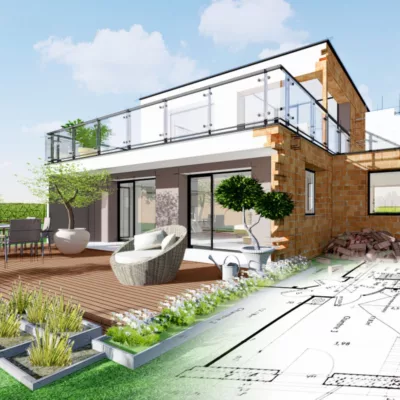BLOG
What is "Design + Build" When Building a Custom Home?
 Conventional home building follows a systematic process. However, custom home building involves so much personal service that certain changes to that process become necessary. Two common approaches are Design-Bid-Build and Design + Build.
Conventional home building follows a systematic process. However, custom home building involves so much personal service that certain changes to that process become necessary. Two common approaches are Design-Bid-Build and Design + Build.
Design-Bid-Build
Many custom home builders use a process known as Design-Bid-Build. The homeowner hires an architect to create house plans, without or without an independent designer, and then contracts separately with a custom home builder to bid and build the project.
By default, this makes the homeowner the spoke in the wheel, responsible for coordinating the architect, designer, and builder. With multiple companies involved, it becomes much more challenging to maintain a singular project vision and adhere to the project budget. In the chaos, the architect may draw up a fantastic design that’s not achievable within the project budget, for example, or the builder may burden the homeowner with decisions that should have been made as part of the design function.
In addition to lots of unnecessary frustration along the way, the result can be a home that neither the architect, designer, builder, or homeowner is pleased with.
Design + Build
Design + Build means that one company controls the entire project, from design through construction. This streamlined system eliminates unnecessary frustration and delay and keeps everyone following the project budget.
Custom home builders who follow the Design + Build process maintain a team of architects, designers, estimators, project managers, and general contractors and serve as the single point of responsibility.
Benefits of this approach include:
Design + Build Saves Time and Money
When a single firm is responsible for all stages, multiple steps can be worked on simultaneously rather than sequentially. Contractor schedules can be coordinated to minimize downtime. Communication delays are few and far between. According to the Design-Build Institute of America (DBIA), Design + Build, projects are delivered an average of 102% faster than Design-Bid-Build projects.
With the designer and builder working together, the number of costly change orders is minimized. Changes are more likely to include suggestions that reduce costs without sacrificing quality.
Design + Build Increases Coordination and Accountability
The Design + Build process decreases risk and improves accountability by having a single point of responsibility and communication. The project is more efficient and at risk of fewer mistakes that can add time or cost. Coordinating the project’s design, performance, and cost elements is much easier when performed by one company vs. multiple contractors.
Design + Build Reduces Homeowner Stress
Design-Bid-Build requires much more effort from the homeowner, who essentially serves as the project overseer. The homeowner has to ensure that the parties are communicating and help settle disagreements that may erupt between, say, the designer and the builder.
Choose Design + Build for Your Custom Home
Prospect 30 Eight Construction offers top-quality, experienced Design + Build services in the Denver Metro Area and Jefferson County. Fill out the contact form to schedule a free consultation. The right team can make all the difference in building and making your dream home a reality.







